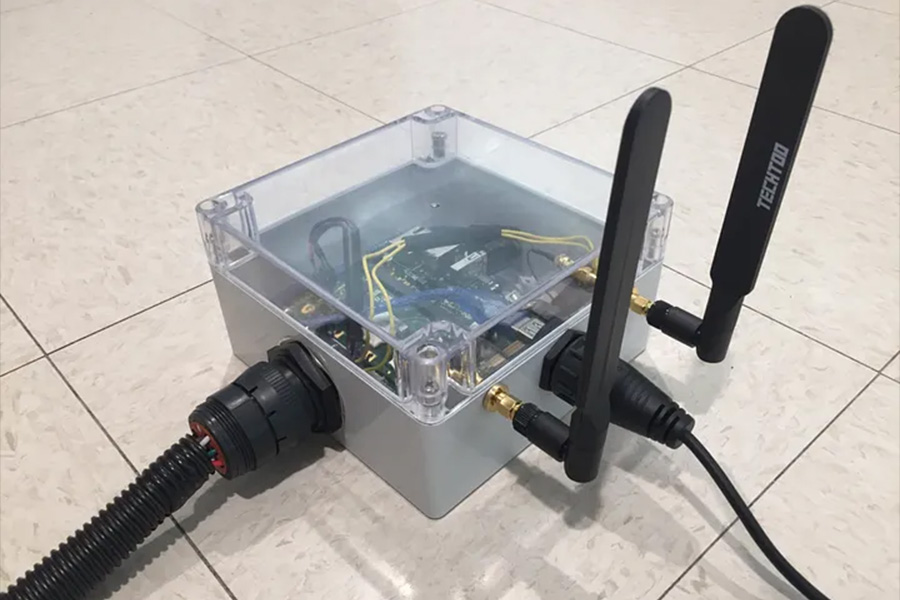Promise is one thing, execution another. The promise of digital agriculture is data-driven precision leading to higher crop yields and sustainable resource utilization. But the execution of any plan to realize the promise is fraught with failure, because the wealth of data and insight is not easily accessible and transferable.
Promise is one thing, execution another. The promise of digital agriculture is data-driven precision leading to higher crop yields and sustainable resource utilization. But the execution of any plan to realize the promise is fraught with failure, because the wealth of data and insight is not easily accessible and transferable.
One problem is silos: not the ones that store the farmer’s grain, but the silos that hem in the data. The data-limiting silos deny farmers the timely content on field and crop status and yield-improving strategies they need to fully exploit their new, sensor- and compute-pervasive, digitally-rich world. The silos often result in data being separated from its context.
The Open Ag Technology and Systems (OATS) Center at Purdue is working to open things up. OATS represents a collaborative effort between Purdue’s colleges of Engineering and Agriculture. It operates around the “farmer-first, farmer-centric” principle: that the digital agriculture revolution can only be fully realized through an open-source development paradigm, in which some of the software behind tools farmers use to make their data valuable and to keep their data private are exchanged freely between people, systems and projects, with the highest levels of interoperability, automation and trust. The automation and trust are important with regard to adoption.
In agriculture today, data either is a hassle or has unclear value. Everyone wants automation, but they don’t want, or don’t know how, to deal with the data — they just want answers. The information technologies used in the food/ag industry and in university research lag behind the state of the art in other industries, due in part to the absence of the thriving open-source communities that have propelled progress in the broader technology sector, where data can flow freely between devices and systems.
This drawback keeps agriculture from taking advantage of many of the most promising avenues for sustainable agriculture system improvements — from novel applications of sensing, networking, computation, and wireless communications to big data science, visualization, and analytics. Powerful datasets and models are researched and developed at the individual-discipline and regional levels, but fundamental issues prevent their translation into practice.
For example, the full value in data is realized only when the data can be integrated from multiple, context-rich sources in ways that adhere to the trust requirements of its owners. The data and algorithms produced by publicly funded food/ag research are not easily obtainable for verification, extension, or translation to practice. The rapid rise of data-driven agriculture also has left many stakeholders short of the proper data analytics, software development, and computational thinking skills necessary to thrive.
These issues are solvable by open-source software enabling data and algorithm exchange. For example, our open-source edge computing framework called Avena addresses this shortcoming; it includes standardized packages of code operating on an open-source platform to remove barriers of vendor lock-in and lack of interoperability. Avena — developed through Purdue’s participation in the National Science Foundation (NSF) Engineering Research Center for Internet of Things for Precision Agriculture (IoT4Ag) — lets vendors safeguard their intellectual property while allowing farmers to run compatible third-party software of their choice. This creates a Google Play Store-like market for agricultural apps.
Our work has been released as open source because we believe that is needed in agriculture to encourage a more innovative environment.
We also believe expertise in computer engineering, electrical engineering, and computer science is critical to progress in digital agriculture.
To this end, Purdue has a Data-Driven Agriculture minor to help students and practitioners leverage advances in sensing, communications, and computation technologies in farming.
We also held a 10-week, USDA/NIFA-funded summer data science program focused on agriculture. Over four years, we hosted 45 students from 22 institutions. Participants learned about data science, coding, and other IT tools. They applied new knowledge gained in independent projects around the agricultural data pipeline, data wrangling, and decision making. In addition, participants were trained to operate state-of-the-art agricultural equipment.
Helping bring this open-source culture to agriculture and democratize innovation is the mission and focus of OATS. The center has several initiatives in research, education and outreach to further open systems and sustainable digital agriculture. It produces targeted online training materials, and shares its work via OATS-sponsored conferences, industry/agricultural associations, academic publications, GitHub, the web, and social media.
For instance: OATS members were part of a winning team at an international hackathon, building an open-source framework and apps for the Dutch swine industry. Our Open Ag Data Alliance project team helped enhance produce-safety data, creating an automated data exchange between trading partners and blockchain platforms. We also conducted webinars and talks on topics like agricultural data pipelines, Python, blockchain, and rural communication and networking.

The ISOBlue module, developed by Purdue Engineering researchers, constantly takes dozens of measurements from farm machinery, providing data to be shared in real time via the cloud. (Purdue University photo/James Krogmeier)
OATS developments helped propel agricultural technology deployment within the Wabash Heartland Innovation Network (WHIN) project. Moreover, the NSF-funded Aerial Experimentation Research Platform for Advanced Wireless (AERPAW) testbed project, led by North Carolina State University, is using our ISOBlue Avena platform, an open-source system for connecting agricultural machines to the cloud to enable real-time data sharing.
Data is key to the future of agriculture, and open-source cooperation is the way forward. Open source built the internet. Now we’re working to better capitalize on that same kind of value in agriculture.
Source: Realizing the promise of digital agriculture


